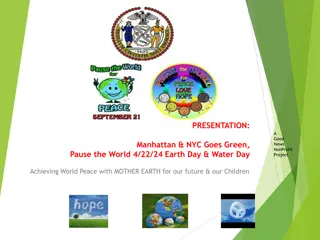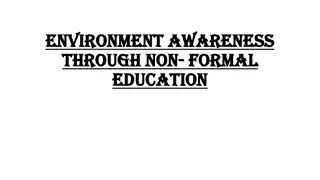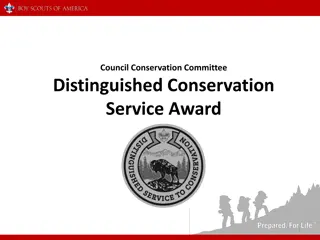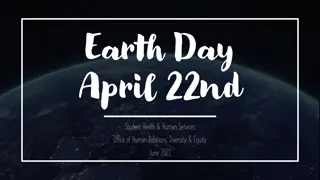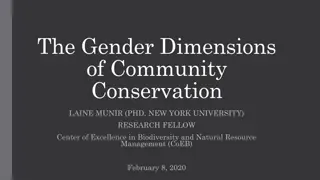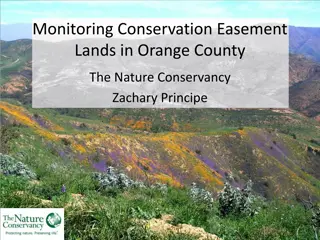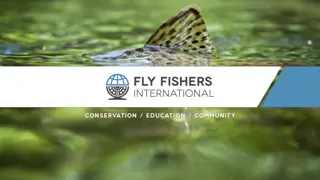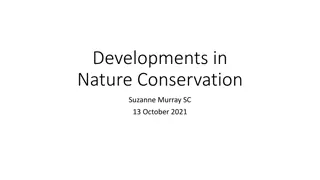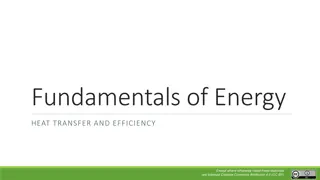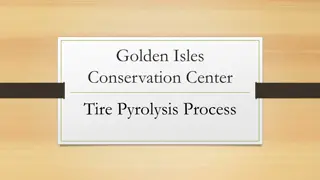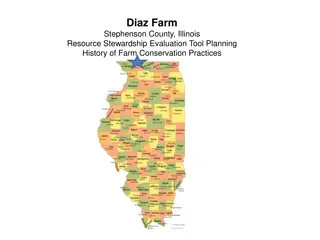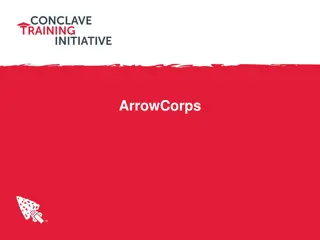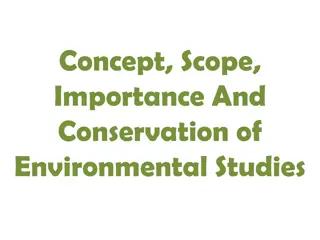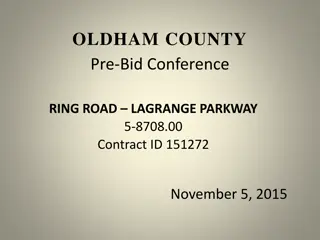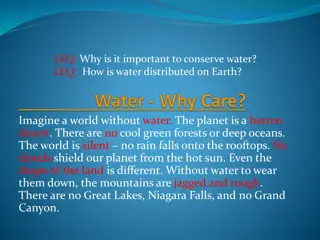Earth Day and Environmental Conservation Information
Earth Day was first established on April 22, 1970. The theme for Earth Day 2021 is "Restore the Earth - Endangered Species - Biodiversity." Bergen County has programs like Clean Communities and Hazmat to protect the environment. Everyone can help fight pollution by recycling, picking up trash, and using eco-friendly products. RRR stands for Reclaim, Reduce, Recycle. Small actions like using reusable items can make a big impact in conserving resources and protecting the planet.
Download Presentation

Please find below an Image/Link to download the presentation.
The content on the website is provided AS IS for your information and personal use only. It may not be sold, licensed, or shared on other websites without obtaining consent from the author.If you encounter any issues during the download, it is possible that the publisher has removed the file from their server.
You are allowed to download the files provided on this website for personal or commercial use, subject to the condition that they are used lawfully. All files are the property of their respective owners.
The content on the website is provided AS IS for your information and personal use only. It may not be sold, licensed, or shared on other websites without obtaining consent from the author.
E N D
Presentation Transcript
On which of the following dates was the first Earth Day established? April 22, 1984 April 22, 1970 April 22, 1999 April 22, 1966
The theme of Earth Day 2021 is: Endangered Species Restore the Earth Biodiversity All of the above
Which program does Bergen County currently have in place to protect our environment? Clean Communities Childhood Lead Hazmat All of the above
Everyone in Bergen County can help fight pollution and climate change by: Recycling Picking up trash Using eco-friendly products All of the above
RRR stands for: Reclaim, Reduce, Recycle Reduce, Reuse, Recycle Recover, Reutilize, Reprocess All of the above
How many gallons of water are wasted annually from a leaky faucet that leaks one drop of water per second? 300 gallons 4,500 gallons 15,700 gallons 27,000 gallons
You can help to keep earths water clean by: Avoiding single-use plastic items Picking up trash Picking up animal waste All of the above
How many plastic drinking straws do Americans use every day? 25,000 100,000 250,000,000 500,000,000
As of 2015, about 6.3 billion metric tons of plastic has been produced in the U.S. How much of that has been recycled? 9% 35% 50% 75%
Which of the following choices can you make at work to help restore the planet?: Use a reusable water bottle Use a reusable bag to carry your items Drink from a reusable straw All of the above
Which household appliance uses the most energy annually? Refrigerator Toaster Dishwasher Washing Machine
You can save the most energy at work by: Turning off the lights when you leave the office at the end of the day Taking the stairs instead of the elevator Making sure that the refrigerator doors in the work kitchens are fully closed Limiting the length of your phone calls
How long does it take glass to decompose in a landfill? 20 years 50,000 years 100,000 years 1 Million years
Compared to traditional incandescent light bulbs energy efficient light bulbs such as halogen incandescent bulbs compact fluorescent lamps (CFLs), and light emitting diodes (LEDs) have the following advantages: They typically use about 25%-80% less energy than traditional bulbs They can last 3-25 times longer than traditional bulbs They save consumers money because they are more energy efficient All of the above
How many single use plastic grocery bags do Americans throw away each year? 10 million 500 million 1 billion 100 billion
How many single use plastic bags are replaced by using just one reusable bag in a year? 300 500 700 1000
The average weather conditions tracked in a place over time (30+ years) is called: Meteorology Climate Weather All of the above
The number one greenhouse gas is: Carbon Dioxide Methane Water Vapor Nitrous Oxide
What is the greenhouse effect? When all of your neighbors build greenhouses When the gasses in earth s atmosphere trap heat in addition to blocking the heat from being radiated back to space The name of climate change legislation that was passed by congress All of the above
Warming trends in our climate may cause a rise in the population of these potentially disease carrying insects in Bergen County: Ladybugs Bumblebees Mosquitoes All of the above



